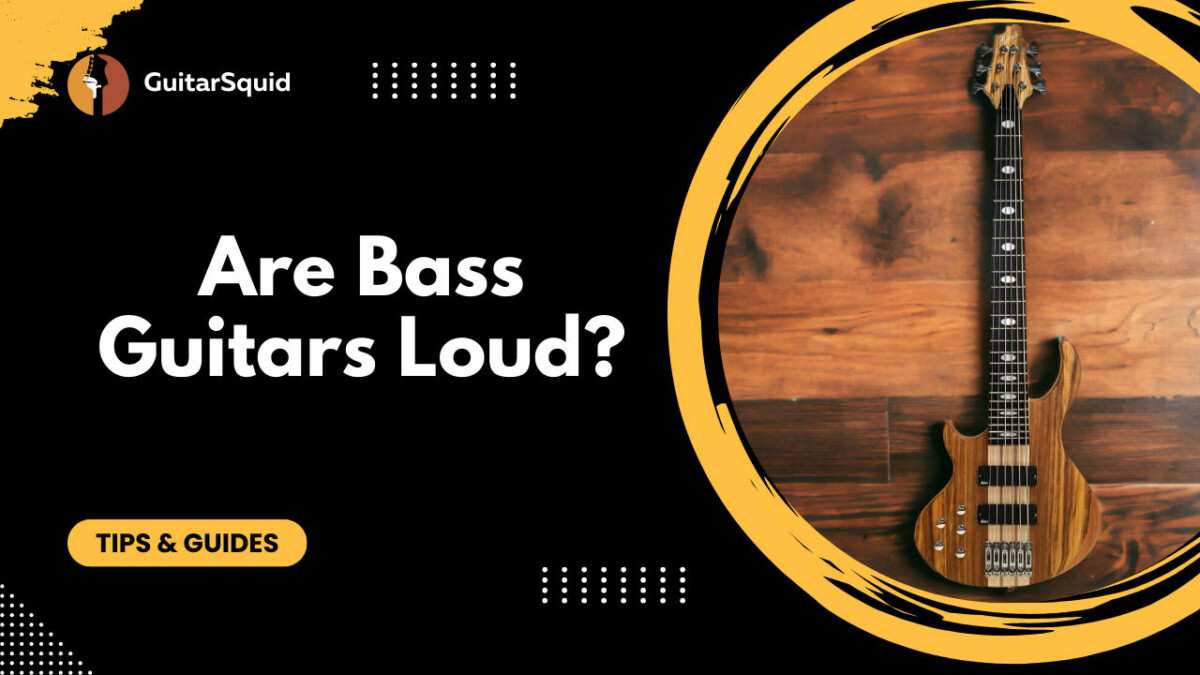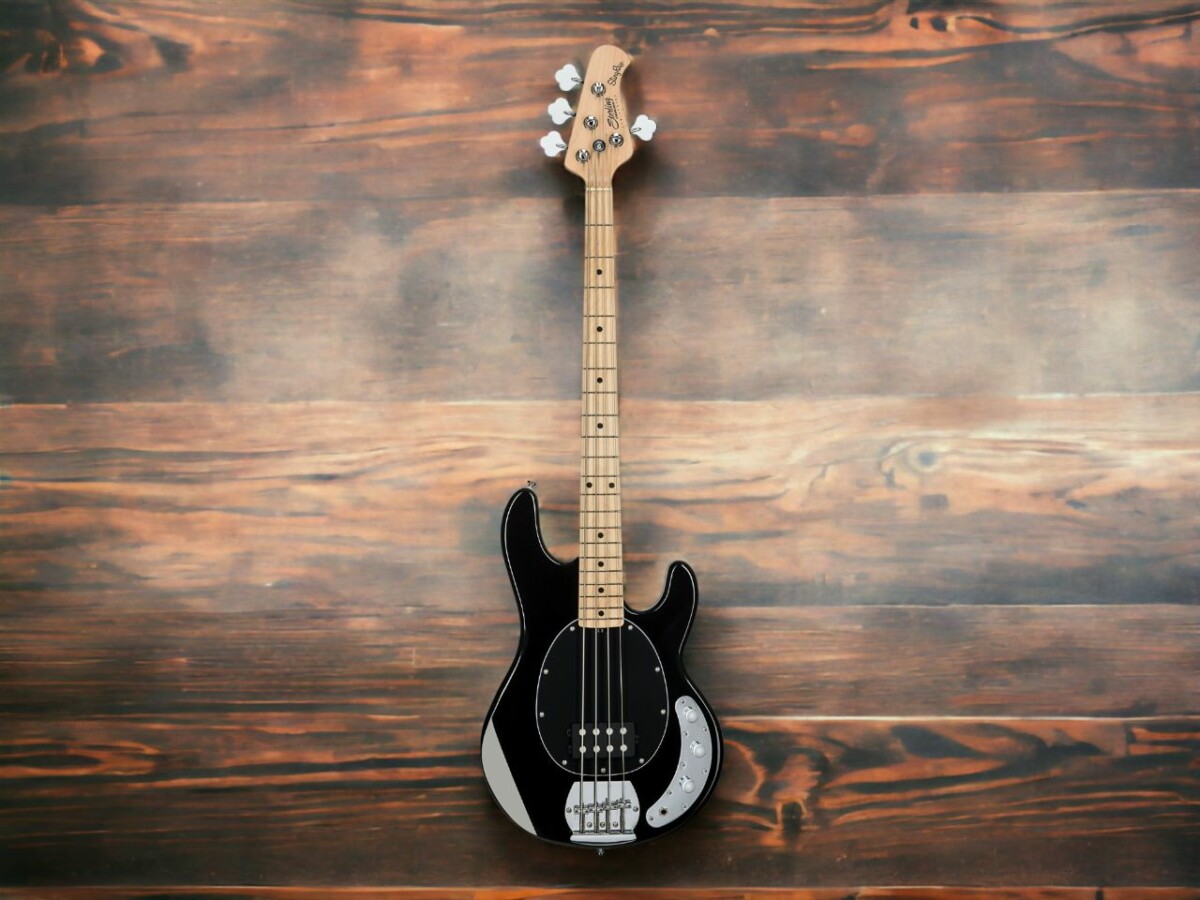So, you’ve just scored your first bass guitar, huh? But there’s this nagging concern – is it going to be too loud? Are you going to disturb the peace or tick off the folks next door?
Chill out! When you’re not plugged in, electric bass guitars are pretty low-key. In fact, they’re even more hushed than their acoustic counterparts. So, feel free to vibe out with your new instrument and forget about the noise.
Let’s get into the nitty-gritty of bass guitar sounds and figure out how to make some sweet music without ruffling any feathers.
Understanding the Sound Dynamics of Bass Guitars
Bass guitars, when you’re just strumming them without any amplification, tend to be pretty low-key and quiet. But, crank them up with a bass amp or connect them to a PA system, and they can really pump up the volume.
Speaking of amps, did you know that using a bass guitar with some amps could cause some issues? Learn more about whether a bass guitar can damage a guitar amp. It’s a pretty versatile instrument when it comes to sound levels, depending on your setup!
To truly get why your bass guitar isn’t blasting out the tunes as loud as you’d expect, you’ve gotta wrap your head around the sound dynamics of bass guitars. Believe it or not, the type of pickup you’re using on your bass can significantly mess with the volume. Take passive pickups – they’re usually not as loud as the active ones. But hey, that’s not the whole story.
Even the strings you choose and how you play can affect the volume. But listen up, it’s not all about the guitar itself. The tools you use to amplify your bass – yes, I’m talking about amps and cabinets – are super important when it comes to cranking up the volume. Heck, even the acoustics of the room you’re playing in can make a difference.
The Influence of Playing Techniques on Bass Guitar Volume
The way you play your bass guitar can have a huge impact on how loud it gets, but it’s all about how well you’ve honed your skills that makes the real difference. The role of amps in cranking up the volume can’t be downplayed either. Here’s a quick rundown:
- Fingerstyle: This is your go-to for a more chill, low-key vibe. By maintaining a steady, even touch, you can keep the volume on the down low.
- Slap Bass: This style is all about that punchy, hard-hitting sound, which naturally comes out louder. Crank up the amp, and it gets even more intense.
- Picking: If you’re using a pick, you’re likely to get a louder, edgier tone than you’d with fingerstyle.
- Tapping: This style can really amp up the volume, thanks to the force of your fingers or thumb hitting the fretboard.
- Thumb Position: If you’re playing with the side of your thumb, you can expect a fuller, louder sound. But as you explore different playing techniques, you might also wonder about other aspects of the bass guitar, like whether a capo can be used on a bass guitar. Each technique and accessory brings its own set of considerations.
When it comes down to figuring out the volume levels of various bass guitar techniques, the secret sauce is all about mastering your playing style. So keep practicing, and you’ll be able to tweak your volume like a pro.
Exploring Ways to Practice Bass Guitar Quietly
If you’re on a mission to up your bass guitar game, finding ways to practice without becoming a neighborhood nuisance is key. Practicing your bass in silence isn’t just about keeping the peace, it’s a must-do for anyone wanting to blend in.
One trick is to go unplugged. This cuts down the sound waves big time, leaving you with the gentle clatter of the strings and a few drum-like sounds, which are pretty low-key.
Another savvy move is to use headphone amps. This genius hack lets you turn up the volume in your ears without sending shockwaves throughout the house. You get to hear every detail of your shredding without letting everyone else in on your private jam session. And if you’re wondering, it’s entirely possible to learn bass guitar at 50 or any age for that matter, especially with these quiet practice methods.
And here’s a tip: consider using flat-wound strings. They’re the quieter cousin of your usual strings, keeping the noise to a minimum.
Assessing the Noise Level of an Unplugged Bass Guitar
When you’re jamming out on an unplugged bass guitar, you might be surprised by how chill the noise level actually is. Still, don’t get it twisted, it’s not like you’re playing in total silence. The volume control on a bass guitar is way more low-key when it’s unplugged, and it’s noticeably quieter compared to other instruments.
Here’s the lowdown:
- Just playing some chill fingerstyle bass won’t create much noise, so you’re probably not going to bug anyone nearby.
- If you’re into more punchy techniques like slapping and popping, it might be a bit louder, but it’s still pretty much on the down-low.
- The sounds you’re going to get from an unplugged bass are mostly string clacks and percussive noises, which aren’t exactly ear-splitting.
- The noise level is actually less than someone softly humming or having a casual chat.
- Pro tip: If you want to keep your playing on the hush-hush, just plug in some headphones into a personal amp.
Tips for Reducing Noise While Playing Bass Guitar
If you’re scratching your head about how to tone down the noise while jamming on your bass guitar, particularly when you’re trying for a more chill practice jam, don’t sweat it. The simplest trick in the book? Just go unplugged. Not having to deal with an amp seriously cuts down the decibels, making it a solid choice for those ninja-like practice sessions.
Now, if it’s the string noise that’s bumming you out, you might want to think about switching to flat-wound strings. They’re pretty slick, literally, and they’re known to significantly reduce that annoying clacking sound. And hey, remember, being a little gentler with your touch can make a world of difference too.
Another legit way to keep things on the down-low while playing your bass guitar is rocking out with headphones. Just plug your instrument into an amp or audio interface, slap on those headphones, and you’re good to go. Your practice session will be as quiet as a mouse to everyone else.
And as a bonus tip, shutting the door while you’re practicing can also help keep the peace. After all, nobody likes a noisy neighbor, right?




